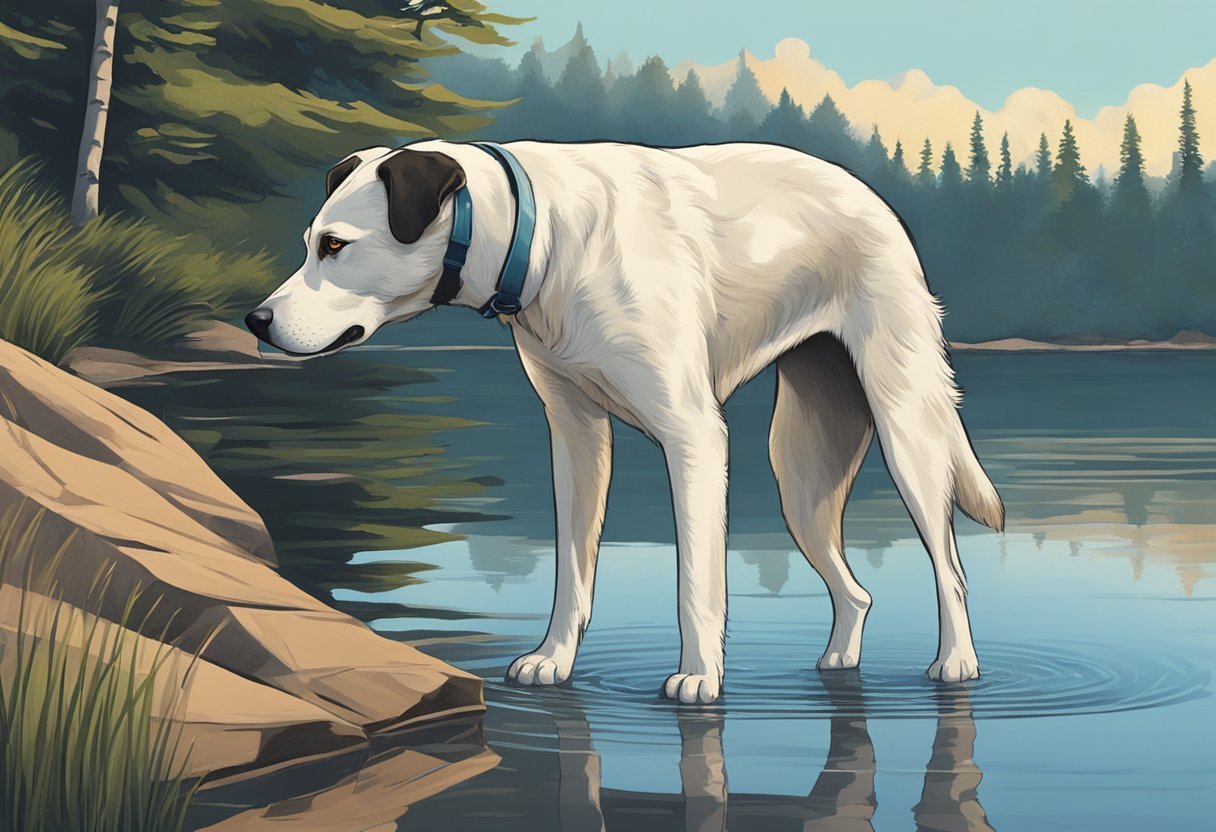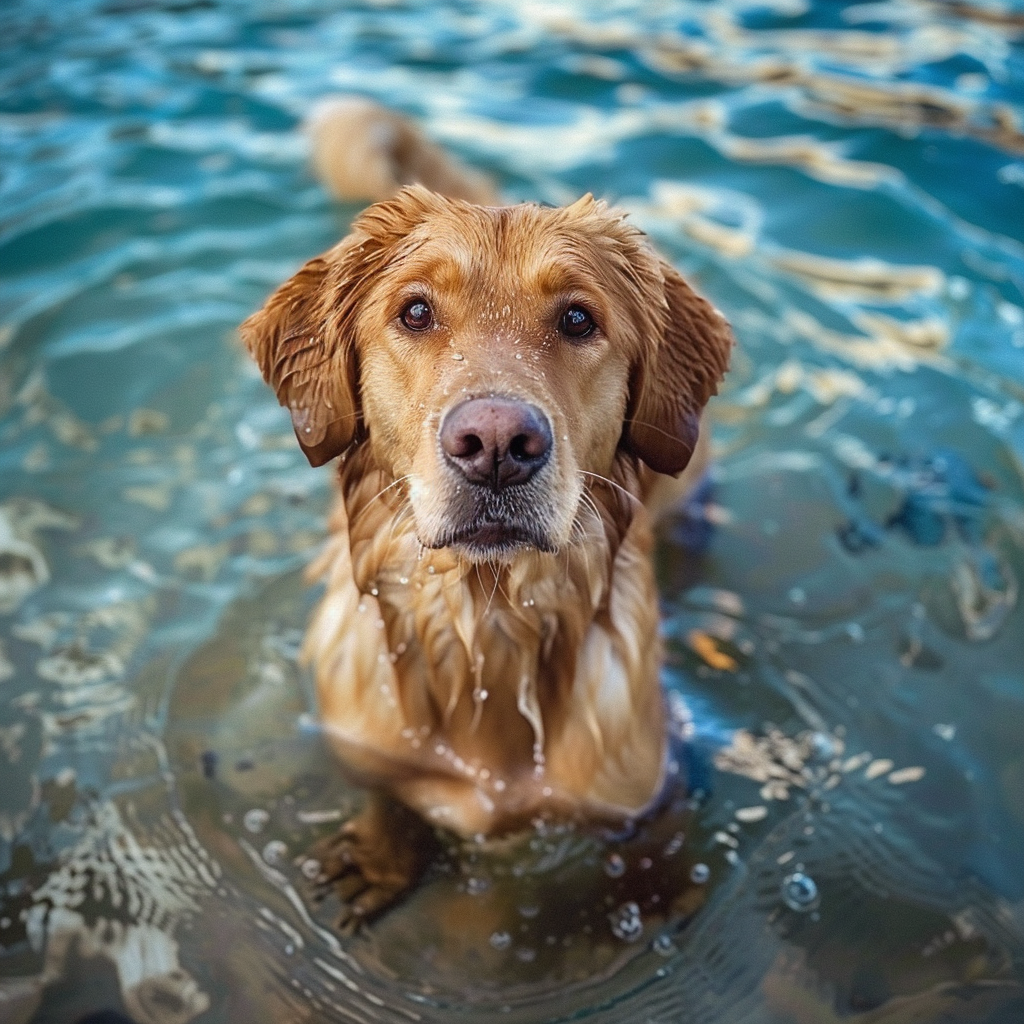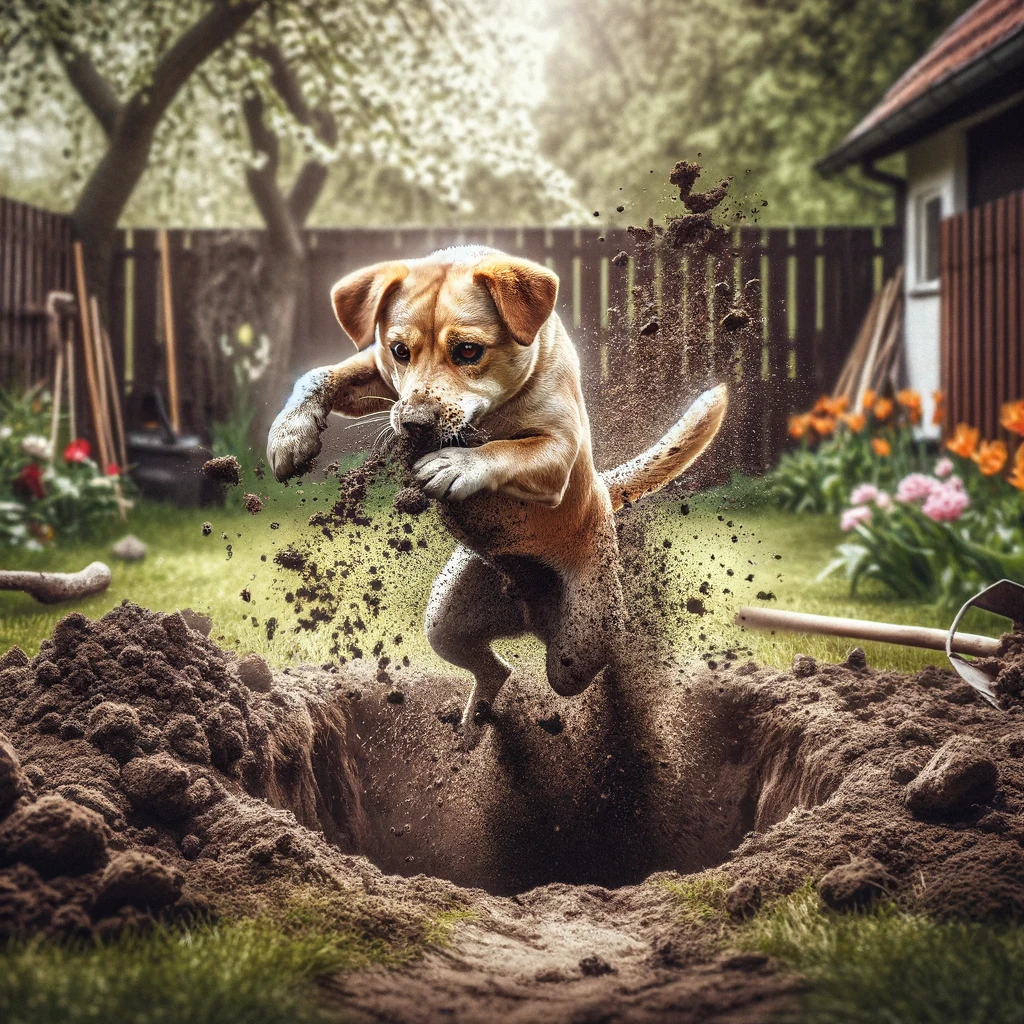Introducing your canine companion to water can be a joyful experience for both you and your pet.
Whether you have a pup that seems naturally drawn to puddles or a furry friend who’s hesitant about getting their paws wet, helping your dog become comfortable around water is important.
Safety should be your top priority, which means easing your dog into the idea of swimming and being around bodies of water before diving in, literally and figuratively.

Key Takeaways
- Gradual introduction and positive reinforcement are key to helping dogs overcome hesitation and develop a love for water, enhancing their safety and enjoyment.
- Equipping dogs with the right gear, such as a life jacket, is crucial for their safety during water activities, ensuring they remain buoyant and visible.
- Training dogs for water-based activities, like retrieval games, not only strengthens their swimming skills but also fosters a deeper bond between pet and owner.
- After any water activity, it’s important to thoroughly rinse and dry your dog, and check for any signs of irritation or discomfort, to keep them healthy and happy.
- Recognizing and respecting each dog’s unique relationship with water is essential; not all dogs are natural swimmers, and some may require more patience and encouragement than others.
Your Dog’s Relationship With Water

Before you bring your doggo to the pool, it’s important to understand how they might naturally interact with water.
Consider your dog’s past experiences and attitude towards water, which can influence how they react. Some pooches may be timid or anxious, while others might be eager to jump right in.
Approach the water’s edge together, allowing your pup to explore and become acquainted with the sensation of wet paws at their own pace.
Equipped with patience and a few treats, you’ll be setting the stage for a positive and splashing good time.
Breed Predispositions and Instincts
Some breeds have a natural affinity for water, often bred into them for specific work-related tasks. For example, retrievers are known for their love of water and strong swimming abilities, a trait that aids in their role as bird dogs.
In contrast, breeds like basset hounds may be less inclined towards water activities due to their short legs and heavy bone structure, which can make swimming more challenging.
- Love for Water: Labrador Retrievers, Golden Retrievers, and other water-friendly breeds
- Less Inclined: Breeds with short legs or those not historically bred for water work
Recognizing Signs of Fear and Anxiety
Your dog’s body language can give you valuable clues about their emotional state regarding water. Signs of fear or anxiety may include:
- Ears pinned back
- Tail tucked
- Whining or whimpering
- Reluctance to approach the water
Understanding these signs can help you adapt your approach, ensuring a positive experience for your furry friend as they learn to navigate the water. Remember, patience and gradual exposure are key when helping your pup overcome any hesitation.
Preparation for Water Introduction

Introducing your pup to water can be a fun and rewarding experience, but preparation is important for ensuring a safe and enjoyable time. Focus on evaluating safety, picking the perfect spot, and collecting all the necessary gear before your pooch’s first dip.
Choosing the Right Location
The right location matters when it’s time to introduce your pet to water for the first time. Look for a calm and quiet spot to avoid overwhelming your pup. Shallow areas where your pooch can easily touch the bottom are ideal. Consider these places:
- Pools: A controlled environment with gentle steps for easy entry.
- Lakes: Typically calm and may offer a gradual slope.
- Beaches: Ensure they are pet-friendly and not too crowded or noisy.
- Ponds: A quiet area free from distractions.
If you are considering buying a dog pool for this purpose, consider our article on making sure they are fun and safe for your pup.
Assessing Water Safety
Before your dog’s first swim, ensure the water is safe for your companion.
Freshwater sources like lakes and ponds should be clean and free of strong currents or hazardous debris.
When considering pools, confirm that the chlorine levels are safe for canines.
Always check local advisories for beaches to know about water conditions and any potential health warnings in saltwater areas.
Gathering Necessary Supplies
Having the right supplies on hand can make your doggo’s water introduction smoother. Compile a checklist of items to bring along:
- Life Vest: Adds buoyancy and makes swimming easier for your pooch.
- Toys: Floating toys can encourage your pet to venture into the water.
- Treats: Use them as a reward and an incentive to enter or exit the water.
- Flotation Device: For added safety, especially in deeper water.
Remember, your pup’s comfort should be your priority, so take it slow and keep the first introduction positive and stress-free.
The First Encounter With Water

Introducing your furry friend to water for the first time is crucial. A positive initial experience can set the stage for a lifetime of enjoyable water activities together.
McCann Professional Dog Trainers say the following on the subject:
” I will first play in the shallow water with the pup, allowing them to feel and enjoy the water. We might splash around, play little retrieve games along the shallow shore, run and chase a bit, and then, without making a big deal out of it, I’ll move further into the water. Most times, the pup will follow happily. “
Creating Positive Associations
Begin with encouragement and rewards. Here’s how you can make that first splash a big hit:
- Incorporate their favorite games near the water to build a positive connection.
- Gently splash water on them during play to introduce the sensation in a fun way.
- Start with shallow water play sessions to gradually build their confidence.
- Use a calm and cheerful tone when near water to reinforce a sense of safety and enjoyment.
Slow and Gentle Introduction
Ease your pup into the experience:
- Start by wetting their paws and gradually go deeper as they get comfortable.
- Avoid rushing or forcing your companion, as this can foster fear.
- You can even go in with them if you are able and dressed for it to show them it is safe.
Calm and Shallow Waters
Choose the right environment for your pooch’s debut swim:
- Opt for still, shallow water where your pet can feel the bottom.
- Ensure the setting is quiet to keep your pet at ease, free from distractions or intimidating waves.
By following these steps, your dog’s initiation into the wet and wonderful world of water will be a splash success!
Safety Essentials for Your Dog’s Water Adventures

Engaging your dog in water activities can be an enriching experience, offering both physical exercise and mental stimulation.
Whether you’re introducing your pup to a serene lake, a refreshing pool, or the vast ocean, equipping them with the right safety gear is vital.
Life Jackets for Dogs
A life jacket is an indispensable piece of safety gear for dogs of all ages and swimming capabilities. Even if your dog is a strong swimmer, a life jacket can provide extra buoyancy and help prevent fatigue in water. Here’s what to look for in a dog life jacket:
- Proper Fit: Ensure the life jacket fits snugly without restricting your dog’s movement. It should allow for natural and comfortable swimming.
- Visibility: Bright colors and reflective strips can help keep your dog visible, whether you’re near the shore or out on a boat.
- Handle on the Back: This feature is incredibly helpful for lifting your dog out of the water if they become tired or encounter difficulties.
Safety Around Pools
Pools can pose specific risks to dogs, including slippery surfaces and chlorinated water. Here are some safety tips for pool environments:
- Stair Training: Teach your dog where and how to exit the pool. Practice this repeatedly until your dog can easily find their way out.
- Slip-Proofing: Use pool mats or rugs around the pool area to prevent slipping and injuries.
- Pool Covers: Be cautious with pool covers, as dogs might mistakenly walk on them, leading to accidents. Always supervise your dog around covered pools.
Supervision Around Water
Constant supervision is key to preventing accidents. Dogs can silently struggle in water, so it’s crucial to keep an eye on them at all times. Here are some additional pointers:
- Never Leave Them Unattended: Even with a life jacket on, a dog should not be left unsupervised near water.
- Understand Your Dog’s Limits: Keep sessions short to prevent exhaustion, and always be ready to intervene if your dog shows signs of tiredness or distress.
Additional Safety Measures
- Fresh Water Availability: Ensure your dog has access to fresh drinking water to prevent them from drinking chlorinated pool water or salty sea water, which can lead to health issues.
- Rinse Off: After swimming, rinse your dog with fresh water to remove chlorine, salt, or natural contaminants from their fur.
- Observe for Signs of Distress: Be alert to any signs of discomfort or unusual behavior after swimming, as this could indicate water ingestion or other issues.
Incorporating these safety measures and gear into your dog’s water adventures can significantly enhance their safety and enjoyment. Remember, while water activities offer a wonderful way to bond with your pet, keeping them safe should always be your top priority.
Water Retrieval Game Ideas

Water retrieval games are a fantastic way to blend exercise, training, and fun for your dog, especially during the warmer months.
These games not only strengthen your bond with your pet but also encourage them to become more comfortable and confident in the water.
Here are some ideas to get started:
| Activity | Description |
|---|---|
| Basic Fetch in Water | Start with a fetch game in shallow water using a floating toy. Ideal for introducing dogs to water retrieval in a safe, calm environment. |
| Dock Diving | Involves dogs running on a dock and leaping into water to retrieve a thrown toy. Suitable for adventurous dogs, enhancing confidence and swimming skills, and can be competitive. |
| Underwater Treasures | Advanced game for dogs comfortable in water, involving diving to fetch toys from the bottom of a clear pool. Requires patience and gradual training. |
| Racing to Retrieve | For two dogs, involves racing to retrieve toys thrown into water, promoting healthy competition and improving retrieval skills. |
| The Moving Target | Entails chasing and retrieving a floating toy that moves with the current or is controlled remotely, adding difficulty and excitement through navigation and anticipation. |
| Paddleboard Retrieve | For dogs comfortable on a paddleboard, involves throwing a toy into the water for retrieval, enhancing balance, swimming, and coordination as the dog jumps off and climbs back onto the board. |
Post-Swim Care

After a fun and refreshing swim, you must not overlook the importance of proper post-swim care for your furry friend.
This care is essential for maintaining your dog’s skin and coat health, preventing potential discomfort, and ensuring they remain happy and healthy after their aquatic adventures.
Here’s how to effectively manage your dog’s post-swim routine:
Rinse Thoroughly
Whether your dog has been swimming in a pool with chlorine, salty sea water, or a freshwater lake or river, it’s imperative to rinse off any residual water from their coat.
Chlorine can be harsh and drying on the skin, potentially leading to irritation. Similarly, salt from ocean water can dry out the fur and skin, causing itchiness. Natural bodies of water might contain various microorganisms or algae that could be harmful if left to sit on the skin.
Use clean, fresh water to rinse your dog thoroughly. This step helps to remove not just the irritants mentioned but also any debris, dirt, or sand that may have become entangled in their coat during the swim.
Check and Clean the Ears
Water that gets trapped in a dog’s ear canal can lead to infections, which are not only painful but can also be challenging to treat.
After rinsing your dog, gently dry around the ears with a soft towel. For breeds with floppy ears, it’s particularly important to lift the ear gently and wipe the underside.
You can also use a vet-recommended ear cleaner with a cotton ball to clean the outer ear canal gently. However, avoid inserting anything deep into the ear to prevent damage.
For more on how to clean dog ears, read this article.
Dry the Coat
Proper drying is a must to avoid issues like hot spots (acute moist dermatitis), which can occur when the coat remains damp for too long, especially under a thick or long fur.
Use towels to remove as much water as possible, and if your dog tolerates it, a hair dryer on a cool setting can help dry the fur thoroughly.
Ensure to keep the dryer moving to avoid concentrating the heat in one area and always be mindful of your dog’s comfort level with the noise and sensation.
Brush Out the Coat
After your dog is dry, brushing is an important step to prevent matting, especially in breeds with longer fur.
Brushing not only helps to detangle the fur but also stimulates the skin and helps distribute natural oils throughout the coat, keeping it healthy and shiny.
Check for Irritants
Post-swim and after drying, check your dog’s skin and coat for any signs of irritation, such as redness, rashes, or unusual scratching.
Pay special attention to areas that were submerged or wet for extended periods. If you notice any signs of discomfort or irritation, consult your veterinarian for advice on treatment or special shampoos that may help soothe the skin.
Incorporating these steps into your dog’s regular swimming routine can help form good habits, making the post-swim care process smoother and more efficient each time. This not only ensures your dog’s well-being but also makes swimming a safe and enjoyable activity for both of you.



